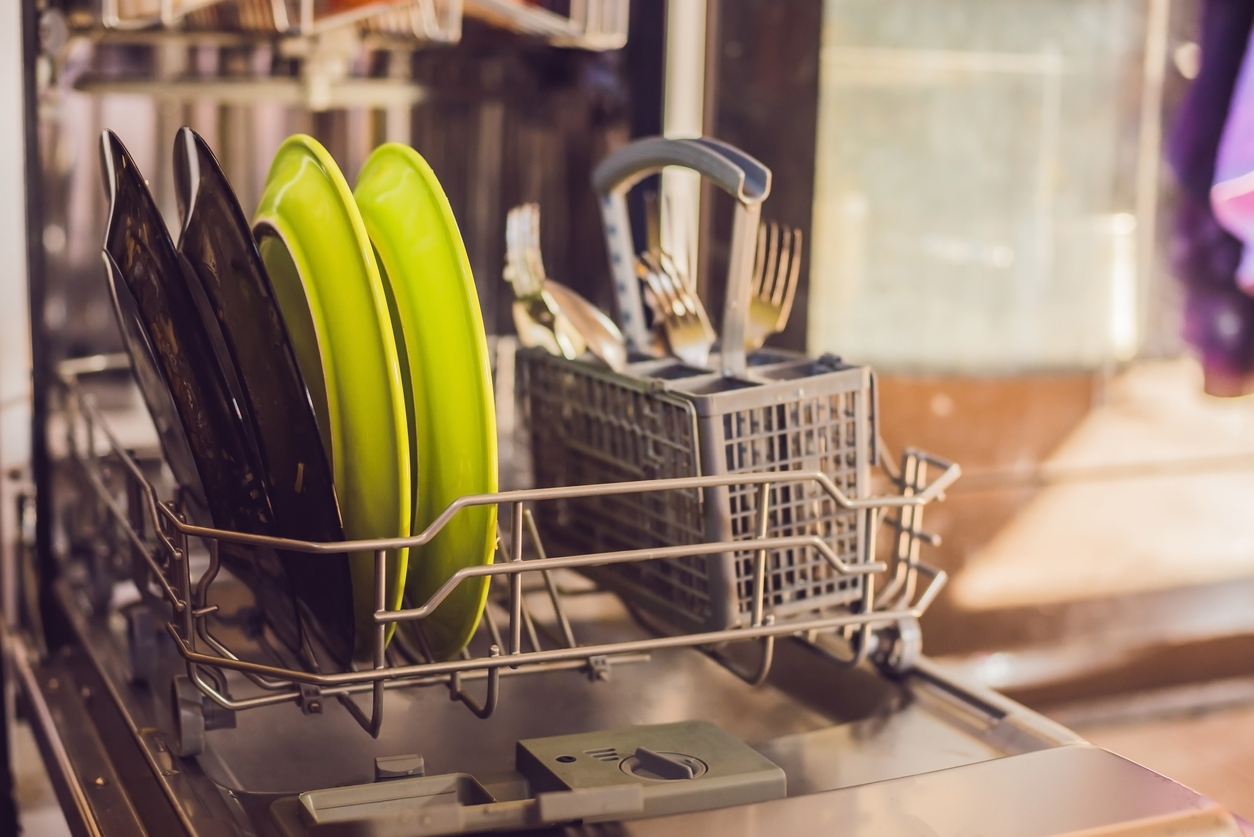
Your dishwasher helps make cleaning easier every day, but what happens when your dishwasher is in need of some TLC?
Dishwashers are almost always dark and damp, making them a breeding ground for bacteria and mould. Even though your dishes might come out sparkling clean after every wash, those hidden germs might be preventing your tableware from coming out truly sanitized. By giving your GE dishwasher a little extra attention, you can keep the fungus at bay and make sure your dishes are coming out as clean as they can be!
1) Sanitize the Gasket
The rubber seal on the inside of the door is the number one place where mould and bacteria collect, so be sure to give it a thorough clean every few weeks. A toothbrush and some soapy water are all you need to get the worst of the grime, but mixing some white vinegar into the water can help punch up the sanitizing power. Be sure to dry it off thoroughly with a paper towel when you’re done, or the germs will just start collecting all over again.
2) Clean Out the Filter
Check the dishwasher filter regularly for food particles and other debris. Rotting food is a huge source of mould in the dishwasher, especially if it gets circulated around the wash tub during cycles. If you want to keep mould from taking hold, clean out the filter about once a week, and give the filter fixture a good scrub in soapy water at least once a month.

3) Dry Out Your Dishwasher
Letting your dishes air dry after a wash cycle might be energy efficient and eco-friendly, but if you choose this option, you need to make sure your dishwasher is getting completely dry between cycles. Keep the dishwasher door open while air-drying dishes and maybe even after if you still see moisture in the tub.
4) Rinse With White Vinegar and Baking Soda
These handy household cleaners are just the thing for busting fungus in the dishwasher. They’re food safe, so they’re perfect for use around dishes, and they’re gentle enough so as not to damage the sensors and machinery in the appliance. Bleach and harsh chemicals can break the heat sensors in your GE dishwasher, and you definitely don’t want that.
To stop mould in its tracks and keep your dishwasher clean and fresh, run a hot wash cycle with nothing but a bowl of vinegar in the top rack. Then, sprinkle the entire inside with baking soda and run a short hot water cycle. You might even want to remove the racks from your dishwasher and wash them separately, to remove any caked-on debris or water scale.
If you give your dishwasher a thorough clean at least once a month, mould won’t stand a chance. The better you take care of your GE dishwasher, the better it will work for you! By giving your dishwasher a good clean every now and again, your dishes will be cleaner and your dishwasher will last longer than ever.
If this advice came too late for your old, mouldy dishwasher, it might be time for an upgrade. Come by our store to check out the latest models GE has to offer and get more appliance care tips from our expert associates!
Amanda, Your Appliance Expert

